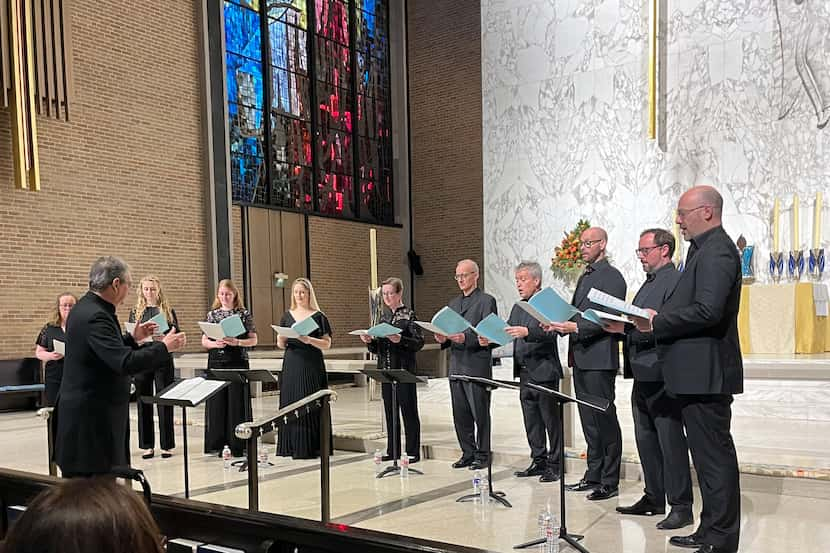You might think a concert of 16th-century English church music, in Latin — with a few pieces barely tipping into the 17th century — too esoteric to attract much of a crowd. But on international tours and recordings the British chamber choir known as the Tallis Scholars has “sold” renaissance music with highly polished and expressive performances. Their Sunday evening concert at St. Michael and All Angels Episcopal Church in Dallas drew a sizable and enthusiastic audience.
Politically and religiously, 16th-century England was a turbulent place. Depending on the monarchs and advisers in charge, the English Reformation swung back and forth between Catholic and Protestant inclinations.
With the 1549 publication of the English language Book of Common Prayer, the vernacular was made the norm in Church of England services. But Latin texts were sometimes allowed in cathedrals and royal and collegiate chapels where worshipers were more likely to be educated and thus conversant with Latin. Composers of church music had to be adaptable.
Despite the challenges, the 16th and 17th centuries in England saw a great flowering of church music. Thomas Tallis, William Byrd and Orlando Gibbons are the composers most likely to be encountered today, and the first two were included in Sunday’s concert.
Half the selections, though, were by Byrd’s contemporaries Robert Parsons and Robert White. While far less known today, they were anything but lesser lights. Specialized musicologists could elucidate differences in these four composers’ voices, but they shared a proclivity for soaring lines woven into sophisticated counterpoint, with piquant crunches of dissonance. The music is at once intellectual, sensuous and sublime.
(A certain kind of passing dissonance is called a cross relation. Thus the joke, “Why did Thomas Tallis have such an unhappy family life?” “Because he had so many cross relations.”)
Bookending the concert’s first half were settings by White and Tallis of passages from the Bible’s handwringing Lamentations of Jeremiah, inspired by the circa 586 B.C. sacking of Jerusalem and destruction of the Temple. An “Exaudiat te Dominus” by White set Psalm 20′s prayer for deliverance from tribulation.
The program’s second half was more affirmative: an “O bone Jesu” and “Ave Maria” by Parsons and, reducing the ensemble of 10 singers down to five, a “Regina caeli” by White. Four settings of saints’ days texts from Byrd’s Gradualia varied from the jollity of “Gaudeamus omnes” to the introspection of “Justorum animae.”
Led with elegant understatement by director Peter Phillips, the Tallis Scholars sang with the controlled intensity, musical suavity and fine finish that have gained them an international following. Vocal lines rose and fell as they should, responding to one another, ever so subtly leaning into passing dissonances. The effect was both otherworldly and red-bloodedly human.
A standing ovation was rewarded with “Salva nos, Domine,” an evening prayer for protection, by the turn-of-the-16th-century French composer Jean Mouton.


/cloudfront-us-east-1.images.arcpublishing.com/dmn/ITESS7AAC5VIKBEYJL4HZZPHYA.jpg)
/cloudfront-us-east-1.images.arcpublishing.com/dmn/FEXRJG5H5VCKDLI4Q7ZDC2OJ3Q.jpg)
:no_upscale()/cloudfront-us-east-1.images.arcpublishing.com/dmn/FGMATCSGLKPS7ZC4U7A4QS4IHM.jpg)
:no_upscale()/cloudfront-us-east-1.images.arcpublishing.com/dmn/VV3O77J4DBH5RPTY2DSA3U4GGU.jpg)
/cloudfront-us-east-1.images.arcpublishing.com/dmn/VVGIMAHWGFF2BPST7A36S4AYJY.jpg)